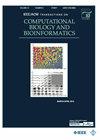基于自我监督学习的图卷积网络用于脑疾病分类
IF 3.4
3区 生物学
Q2 BIOCHEMICAL RESEARCH METHODS
IEEE/ACM Transactions on Computational Biology and Bioinformatics
Pub Date : 2024-07-02
DOI:10.1109/TCBB.2024.3422152
引用次数: 0
摘要
脑功能网络(BFN)分析已成为一种流行的方法,用于在早期阶段识别神经系统疾病并揭示与这些疾病相关的敏感生物标记物。由于脑功能网络是一个结构复杂的图,因此图卷积网络(GCN)可以很自然地用于脑功能网络的识别,如果给定大量的训练数据,通常可以取得令人鼓舞的性能。但在实际应用中,很难获得足够的脑功能数据,尤其是来自脑部疾病受试者的数据。因此,GCN 通常无法从有限的 BFN 中学习到可靠的特征表示,从而导致过拟合问题。在本文中,我们提出了一种改进的 GCN 方法,通过引入自我监督学习(SSL)模块来辅助图特征表示,从而对脑部疾病进行分类。我们通过实验将轻度认知障碍(MCI)和自闭症谱系障碍(ASD)患者分别与正常对照组(NCs)进行了分类。在两个基准数据库上的实验结果表明,与基线方法相比,我们提出的方案往往能获得更高的分类准确率。本文章由计算机程序翻译,如有差异,请以英文原文为准。
Graph Convolutional Network With Self-Supervised Learning for Brain Disease Classification
Brain functional network (BFN) analysis has become a popular method for identifying neurological diseases at their early stages and revealing sensitive biomarkers related to these diseases. Due to the fact that BFN is a graph with complex structure, graph convolutional networks (GCNs) can be naturally used in the identification of BFN, and can generally achieve an encouraging performance if given large amounts of training data. In practice, however, it is very difficult to obtain sufficient brain functional data, especially from subjects with brain disorders. As a result, GCNs usually fail to learn a reliable feature representation from limited BFNs, leading to overfitting issues. In this paper, we propose an improved GCN method to classify brain diseases by introducing a self-supervised learning (SSL) module for assisting the graph feature representation. We conduct experiments to classify subjects with mild cognitive impairment (MCI) and autism spectrum disorder (ASD) respectively from normal controls (NCs). Experimental results on two benchmark databases demonstrate that our proposed scheme tends to obtain higher classification accuracy than the baseline methods.
求助全文
通过发布文献求助,成功后即可免费获取论文全文。
去求助
来源期刊
CiteScore
7.50
自引率
6.70%
发文量
479
审稿时长
3 months
期刊介绍:
IEEE/ACM Transactions on Computational Biology and Bioinformatics emphasizes the algorithmic, mathematical, statistical and computational methods that are central in bioinformatics and computational biology; the development and testing of effective computer programs in bioinformatics; the development of biological databases; and important biological results that are obtained from the use of these methods, programs and databases; the emerging field of Systems Biology, where many forms of data are used to create a computer-based model of a complex biological system

 求助内容:
求助内容: 应助结果提醒方式:
应助结果提醒方式:


